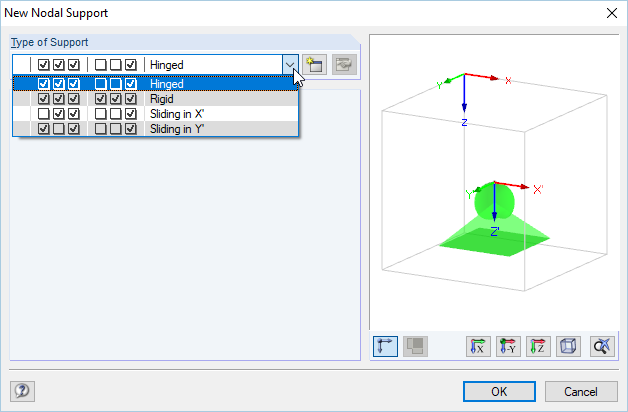Supports are connections between a structural system and its environment. They transfer the loads acting on the structure and prevent unwanted movements of the structure as a result of forces acting on it. Without any supports, all nodes would be free and could be displaced or rotated freely.
If you want a node to act as a support, at least one of its degrees of freedom must be restricted by a spring or blocked. Furthermore, the node must be a part of a surface or a member. The counteracting forces originating from the support are referred to as support reactions.
Nodal supports are required in order to apply imposed deformations. It is possible to provide them with nonlinear properties (failure criteria for tensile or compressive forces, working and stiffness diagrams).
Support Types
- Movable supports allow rotations around the support point and displacements in the direction of the trajectory. The displacement perpendicular to the movement will be blocked. Due to the removal of one degree of freedom, movable supports are referred to as structurally single-valued.
- Fixed supports or support hinges also allow rotations about the support point, but prevent horizontal or vertical displacement options. Due to the removal of two degrees of freedom, fixed supports are described as structurally two-valued.
- Rigidly fixed supports block both rotation and displacement. Rigidly fixed supports are described as structurally three-valued due to the removal of three degrees of freedom.
Entering in RFEM and RSTAB
Nodal supports can be entered and defined in the program using the menu "Insert" → "Types for Nodes" → "Nodal Supports" → "Dialog Box" or the corresponding button, or in tables.
